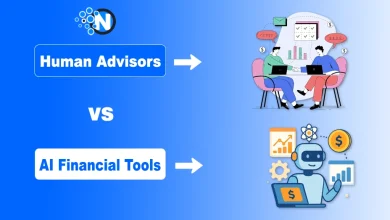The Role of Artificial Intelligence in Asset Management

Asset management is more than just managing physical devices or financial assets. It is a crucial building block for a company’s sustainable economic success and digital maturity. Structured planning, monitoring, and optimization of all resources, whether IT systems, machines, real estate, or data, can reduce costs and achieve competitive advantages.
Artificial intelligence (AI) is at the heart of this development today. It is changing the way companies manage their assets: from reactive measures to proactive, data-driven processes.
In this article, I will explain the role of artificial intelligence in asset management, present key areas of application, and show what is important for successful implementation in the company.
Let’s start!
Artificial Intelligence In Asset Management: A Strategic Change
What was considered a technical vision just a few years ago is now a reality. AI systems support companies in real time in monitoring assets, making decisions, minimizing risks, and efficiently managing the entire life cycle of resources.
The rise of machine learning, deep learning, and generative AI has multiplied these technologies’ potential. Today, AI can analyze data and learn from it, derive forecasts, and suggest courses of action.
This ability is particularly useful in asset management. Suppose you can recognize early on when a machine will break down, which software is outdated, or how the market for financial assets will change. In that case, you can not only react faster, but also plan in a targeted manner – and thus avoid operational disruptions, security gaps, or capital losses.

Key Areas Of Application for AI in Asset Management
1. Condition Monitoring, Maintenance, And Predictive Analysis
Collecting and analyzing asset data is a classic but promising field of AI application. Modern sensor technology and the Internet of Things (IoT) make it possible to continuously collect large amounts of operating data, such as temperature, vibration, power consumption, or running times.
AI-supported systems analyze this data not only retrospectively, but in real time. This allows patterns to be identified that indicate impending failures or inefficient operation. This turns traditional maintenance (“Something is broken, we repair it.”) into predictive maintenance (“We detect a problem early and fix it before it becomes critical.”).
Here are some examples:
- Manufacturing: Predicting machine failures in production by analyzing runtime data.
- Energy: AI-based condition monitoring of solar panels or wind turbines based on yield data and weather models.
- Building management: intelligent HVAC systems (heating, ventilation, air conditioning) that dynamically optimize energy consumption and comfort.
This predictive control reduces repair and downtime costs, extends asset service life, and improves sustainability.
2. Automated Document And Information Management
Asset management generates a huge amount of documentation: contracts, maintenance logs, manuals, license information, security documents and much more. Managing this efficiently is a challenge – especially in highly regulated industries.
AI can take on tasks such as categorization, text recognition (OCR), content analysis or automatic comparison with legal requirements. This turns a time-consuming process into a lean, automated workflow.
Practical applications are the following:
- Insurance: Automated analysis of policies and claims documents for risk assessment.
- Construction and real estate industry: Extraction of relevant data from contracts, plans or proof of ownership.
- IT departments: Assignment of software licenses and devices to departments or employees using intelligent tagging systems.
The time saved by AI-based document automation frees up time for value-adding activities and reduces sources of error that can arise in manual processes.
3. Increased Security And Adherence To Compliance Requirements
As digitalization increases, so do the requirements for security and compliance. Every additional digital asset, be it a server, an end device, or a networked sensor, is potentially vulnerable. At the same time, legal requirements for data protection, access control,l and traceability are becoming more stringent.
AI helps to identify security risks at an early stage, manage access intelligently and respond to suspicious activities. It is able to detect even the smallest deviations from normal operation – such as unusual network access or an unauthorized software installation.
Examples:
- Production: AI-supported camera systems analyze in real time whether people are accessing machine areas without authorization.
- IT security: anomaly detection in log files and network traffic to defend against cyber threats.
- Compliance: Automatic checking of processes and documents for compliance with legal requirements (e.g. GDPR, ISO 55000).
The interaction of security and AI not only reduces risks, but also strengthens the trust of customers, partners and supervisory authorities.
4. AI in Financial Asset Management
AI benefits not only physical assets, but the importance of intelligent systems is also rapidly increasing in the area of financial investments. Companies that invest capital in funds, bonds, or shares are using AI for data analysis, risk assessment, and strategy development.
Deep learning algorithms can be used to correlate historical price developments, economic trends, geopolitical events and key company figures. This enables simulation-based predictions and well-founded investment decisions.
Important Note: AI does not replace financial experts but expands their toolbox through the automated identification of market opportunities or early warning systems in the event of volatility.
Such systems also open up asset management opportunities for smaller companies previously reserved for institutional investors.
Steps for the Successful Introduction of AI in Asset Management
The introduction of AI is not a sure-fire success. It requires technical know-how, strategic thinking, and organizational willingness to change. The following steps will help you to introduce AI sustainably and sensibly:
#1 Clearly Define Goals and Benefits
Which aspects of asset management should be improved? What should be automated, what should be predicted, and what should be made more efficient? Only clear goals can help you achieve measurable added value.
#2 Ensure Data Quality And Build Infrastructure
AI requires structured, high-quality and well-maintained data. Companies need to invest in data collection, storage, and backup systems, such as modern CMDBs, sensor technology, or data lakes.
#3 Selecting the Right AI Tools
The market is large, and from standard solutions to customized models are available. It is important to select based on the existing system landscape, resources, and internal skills.
#4 Integrate into Existing Processes
AI should not be an isolated project, but part of the operational business. It can only have a long-term impact if it is seamlessly integrated into existing processes.
#5 Involve and Empower Employees
AI does not replace people, but changes their roles. Training, transparent communication and change management are crucial for acceptance – and for long-term success.
#6 Continuously Evaluate And Optimize
AI systems must be maintained through feedback, new data, and regular performance reviews. This is the only way to keep them up-to-date, effective, and trustworthy.
Conclusion
Artificial intelligence can potentially transform asset management across all industries and company sizes. It creates transparency, enables proactive control, automates routine tasks, and opens new strategic perspectives.
However, success depends on how well companies understand, integrate and shape this technology. Only those who pursue clear goals, have a clean database and involve their employees will be able to fully exploit the potential.
Ultimately, AI is not just a technical advance, but a cultural change in how resources, risks and decisions are handled.
FAQ – Frequently Asked Questions
How does artificial intelligence specifically support asset management?
AI improves processes through automated maintenance, intelligent document management, increased security, better compliance and informed financial decisions.
Which AI tools are used most frequently?
Machine learning, predictive maintenance, natural language processing (NLP), image and object recognition, automated decision support and cyber security systems.
Can AI replace human specialists?
No – AI is a tool, not a replacement. It complements human decisions, increases efficiency and takes over routine activities. Strategic control and a sense of responsibility remain human.




